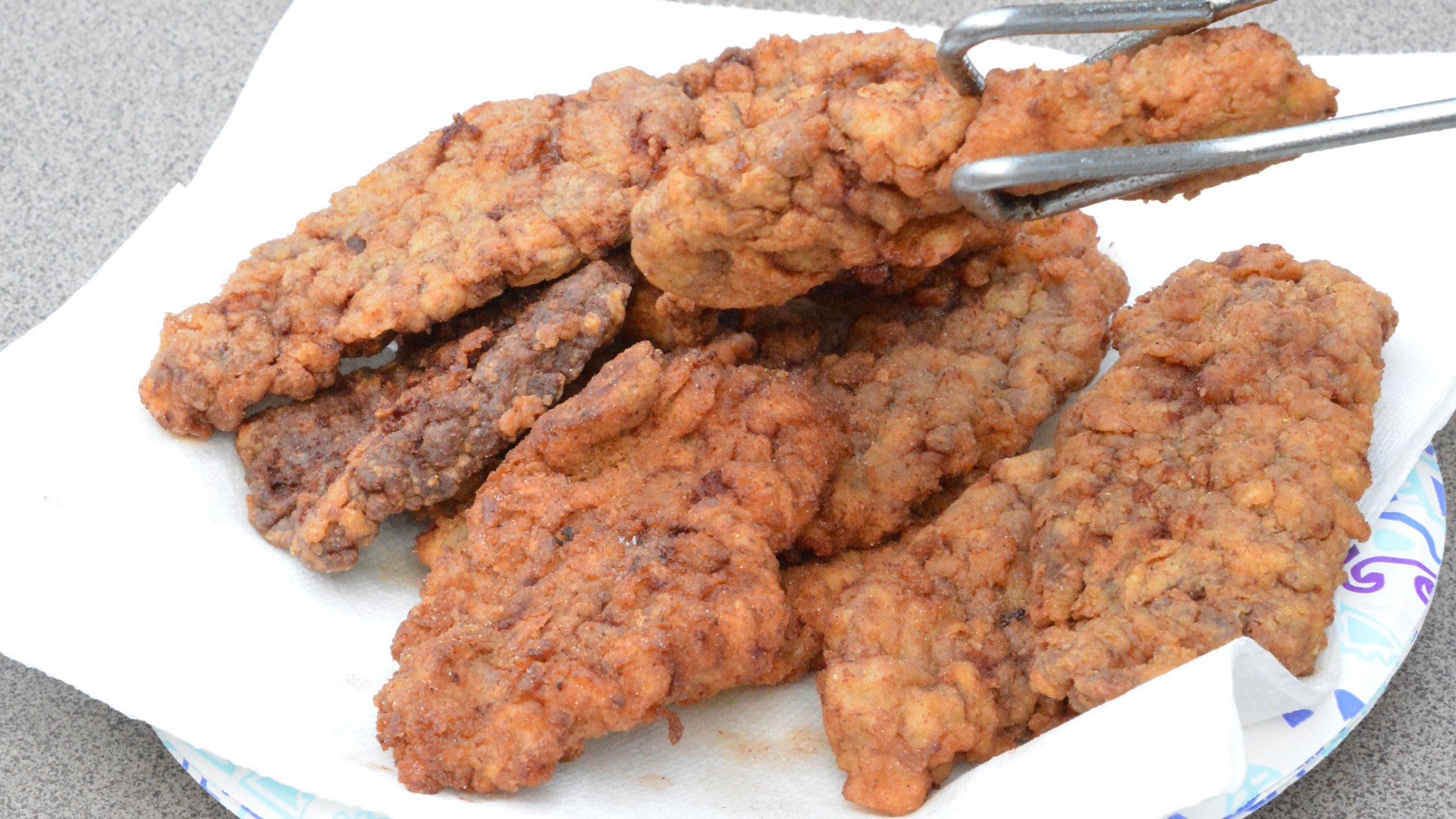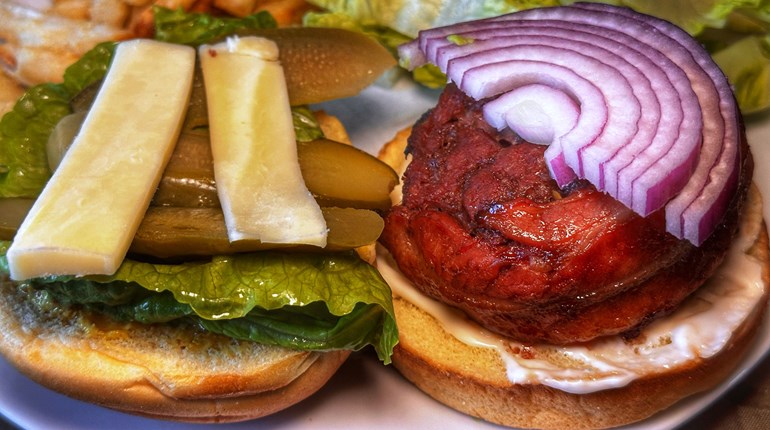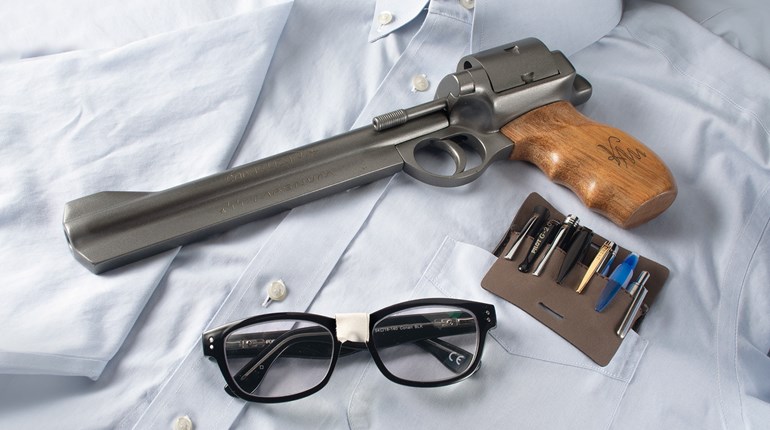
I got this recipe from Jay Jarrett of Jarrett rifles. We were deer hunting in South Carolina and he invited me to his home for dinner. This is what he served, and over the ensuing years it has become a staple here at Camp Towsley.
You can use most any cut of venison, but the big muscles from the hind quarters seem to be best. I have made this recipe with backstrap, and frankly, I don’t think it’s as flavorful as the hind-quarter meat. Besides, there are much better ways to cook backstrap. Even the front shoulder can work, and the steaks will be tender and delicious.
Preparation
Remove all the fat and silver-skin so you have clean, lean venison. Slice the steaks across the grain at least ½-inch thick, making sure they are even in thickness.
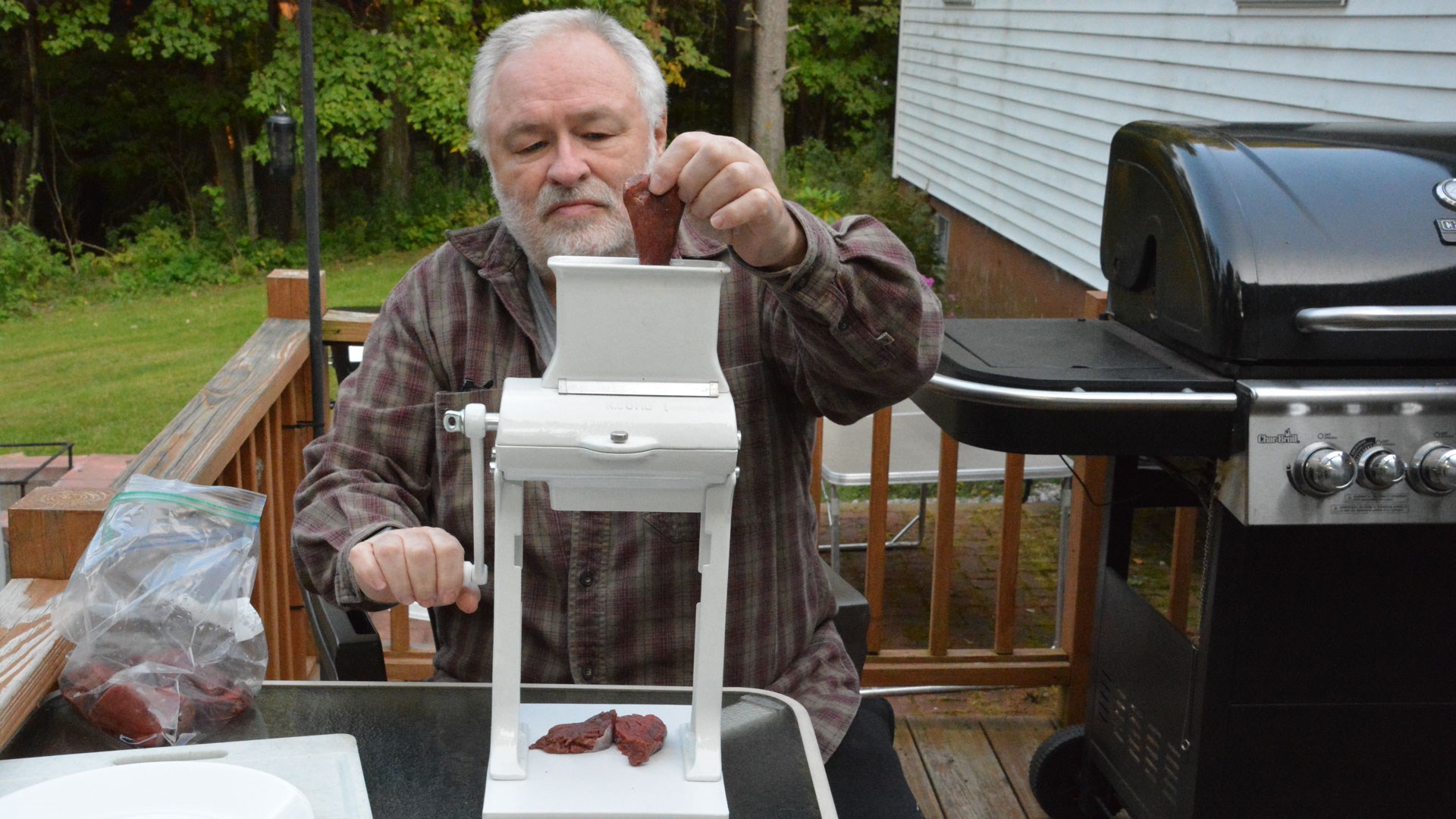
I run them through a hand-crank meat tenderizer twice to make them into cubed steak. To be honest, you can probably skip this step and just use a meat mallet if you don’t have one of the machines. If you have your deer commercially processed, ask the butcher to make some ½-inch thick cube steaks to use for this recipe. Make a lot of them because this is sure to become a favorite.
This next step is very important. Use the toothed side of the large meat mallet to pound the steak on both sides until it’s half its original thickness. I do this outdoors and never wear a good shirt, as it causes a bit of splatter. If the weather keeps me inside, I cover the nearby counter areas with paper towels for splatter shields.
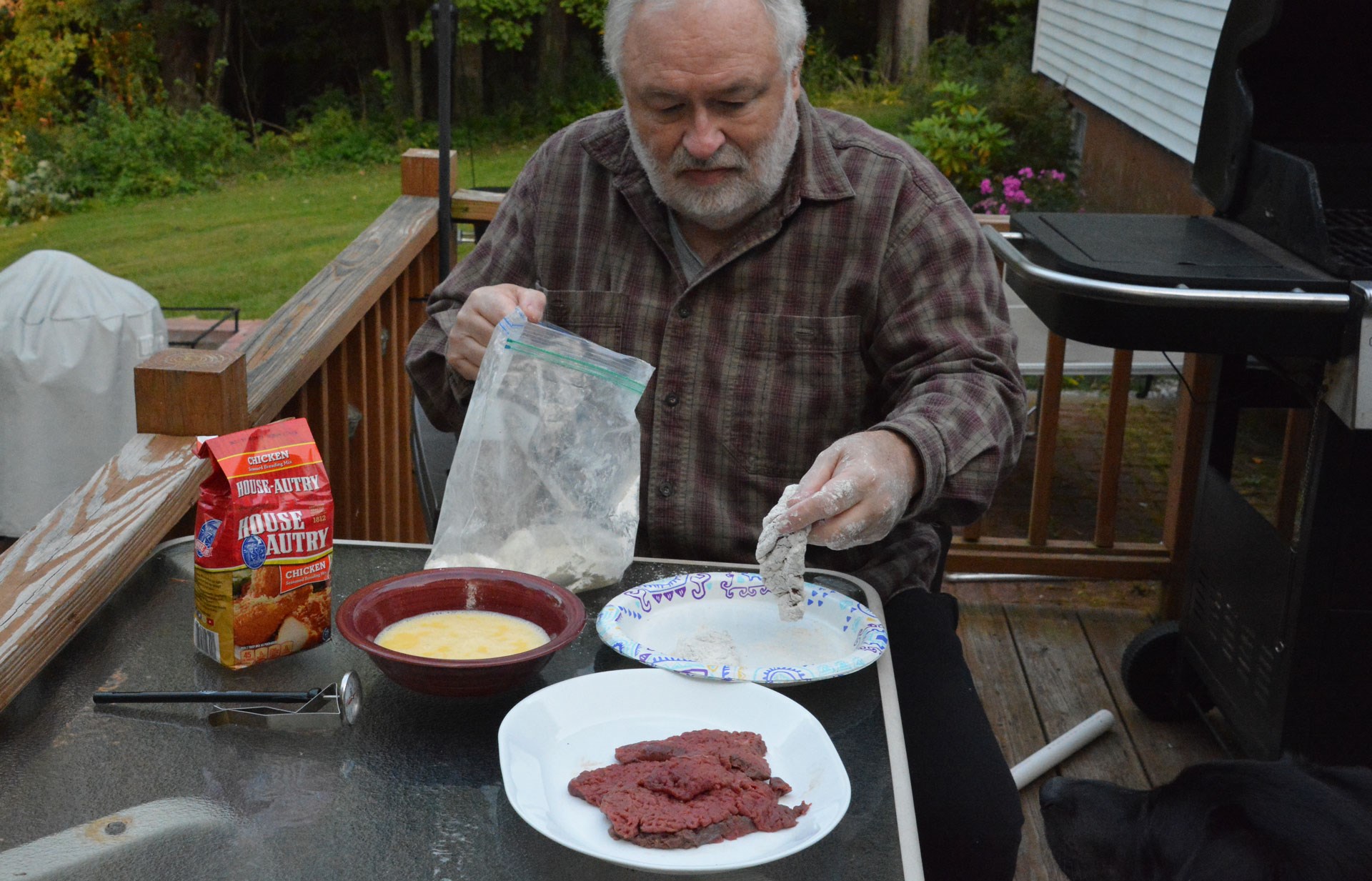
Put the pounded steaks in a big plastic bag with some breading mix and shake until they are lightly coated. It’s easy enough to make your own, but I use House-Autry Chicken Seasoned Breading Mix. That’s what Jay used and he gave me a bag to take home. I have made my own breading mix and I have tried other commercial coatings, but I came back to Autry’s. I like the taste and it’s very convenient. We Yankees might have a little trouble finding this southern product in our local stores. We get ours at Walmart, or you can find it online at Amazon.
I line up the next steps to form a little production line. Again, if I am inside I put down paper towels on the counter, as I am a messy cook. (Note from the author’s wife, Robin: “Admitting he is a messy cook fails to capture the magnitude. Think of a tornado going through your kitchen.”)
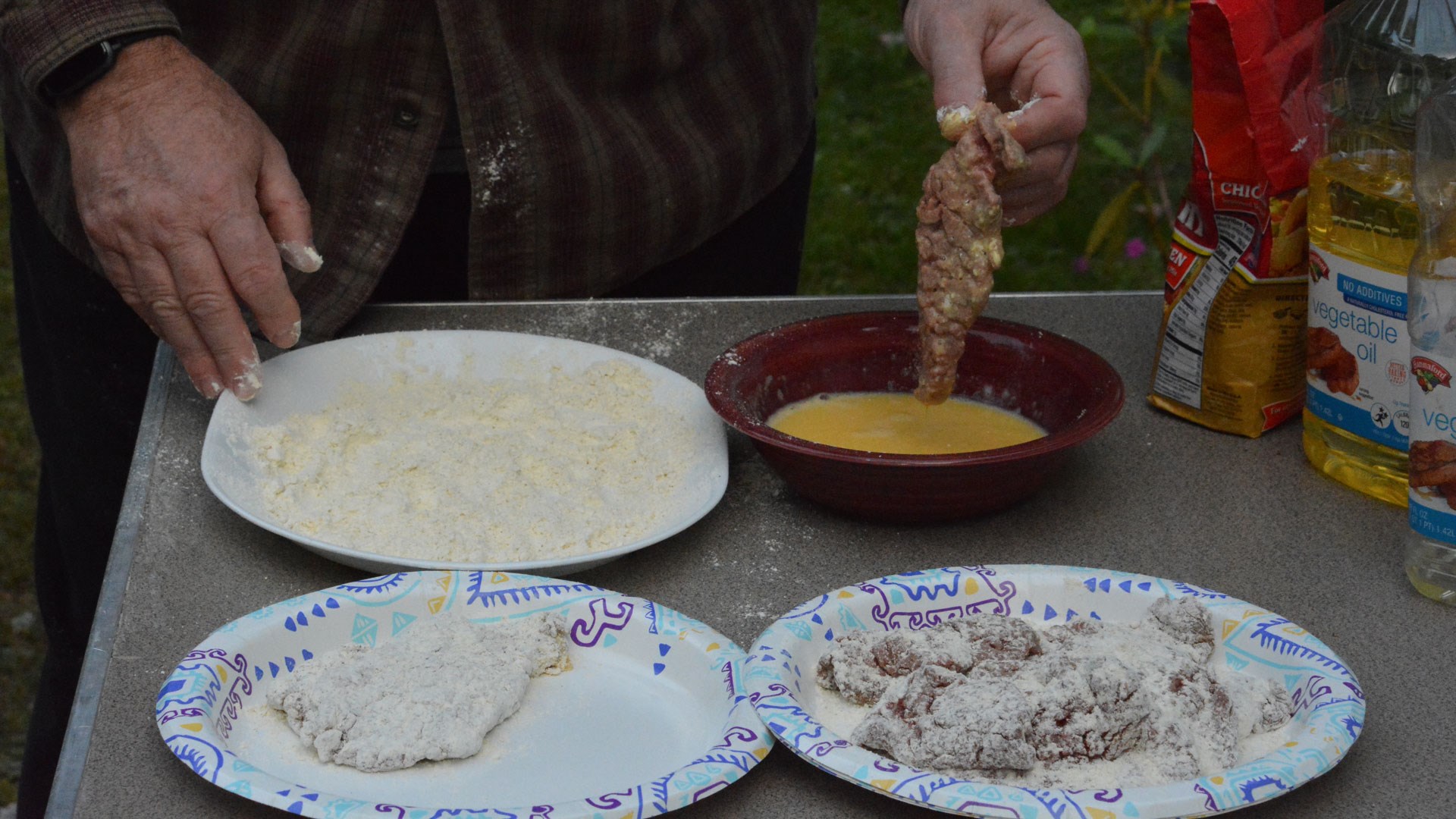
For the first station, you need a bowl with an egg wash. This is two or three eggs mixed with milk or half-and-half coffee creamer. Beat them together as if you were making scrambled eggs.
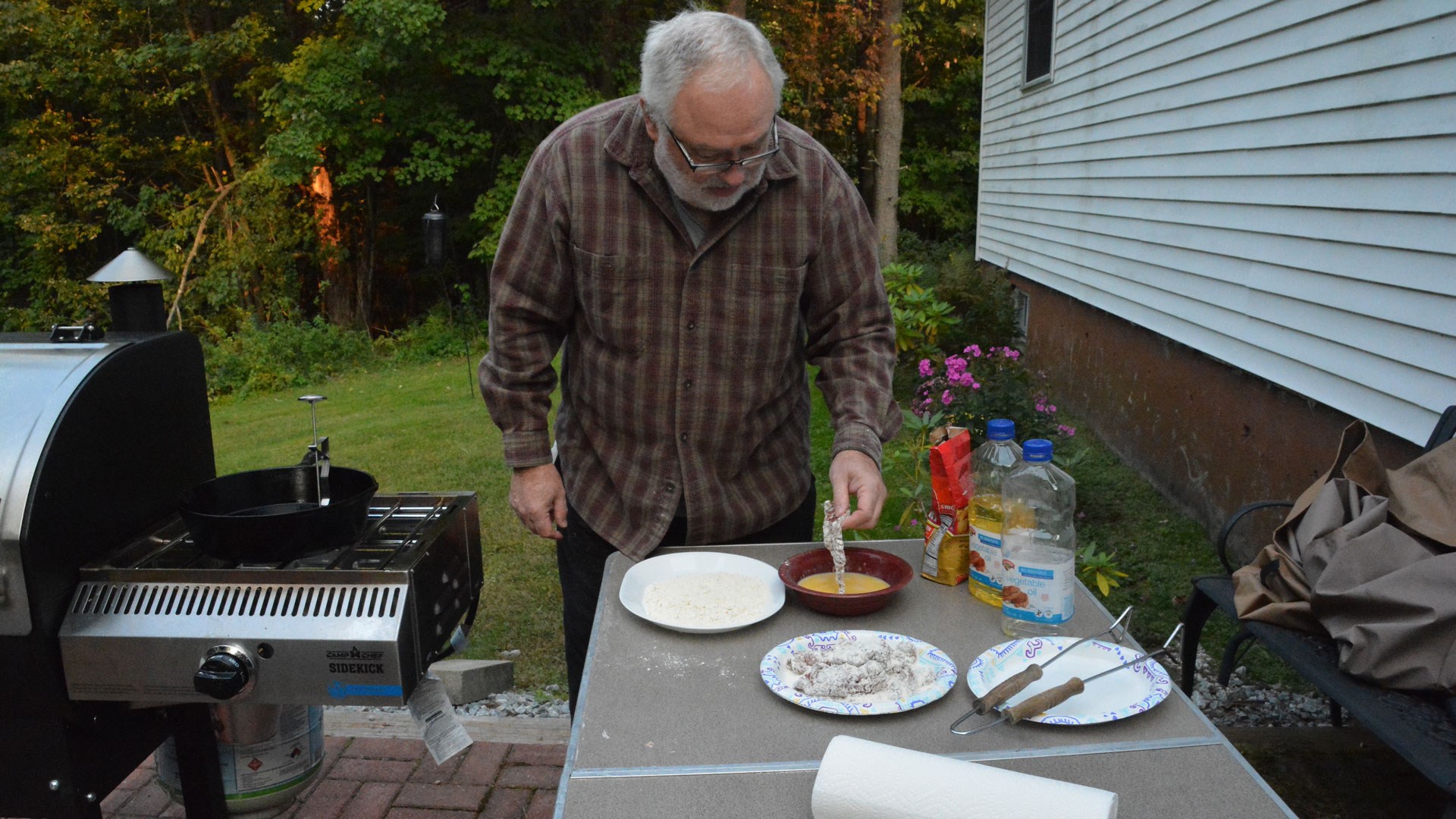
The next station is a bowl or plate with lots of the breading mix on it. Place the egg-washed steak into the breading and roll it around until it’s fully coated. I pick up some breading mix with my fingers and coat the steak, patting in in place. The key is that the steak be fully coated with a thin layer of breading mix.
Cooking
Have some oil in a large pan, already heated to 300 degrees. Use enough oil to submerge the steaks. We use soybean vegetable oil because it’s heart healthier than other oils or lard. Be very careful as the oil is extremely hot and will burn you if you splash or splatter. A big frying pan works well. I use a deep-sided cast-iron frying pan—nothing does it better than cast iron.
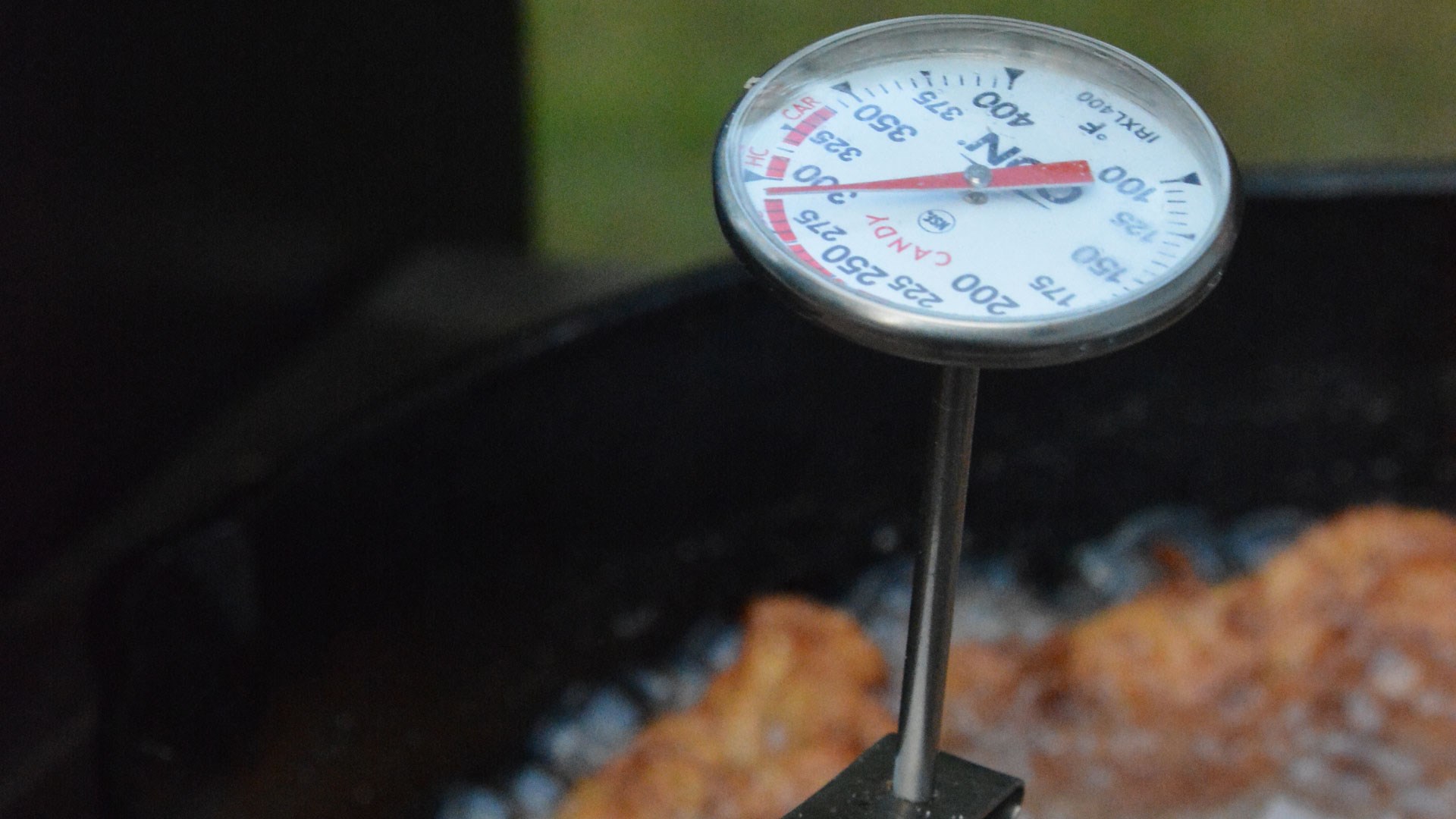
The trick is to control the heat. Too hot and the breading burns before the meat cooks, too cold and you get a greasy steak. I use a thermometer and try to maintain 300 degrees through the cooking time. Of course, the temp will drop when you add the meat, but it should come back quickly.
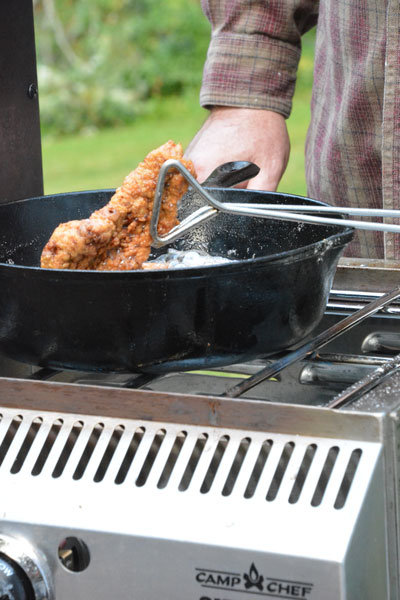
Put in enough steaks to fill the pan, but don’t make it too crowded. Make sure they are completely submerged. Wait a few minutes for the coating to firm up, then gently move the steaks around a little to make sure all areas are clear to cook. I like to turn them at least once in the cooking process.
When the breading is golden brown, they are done. Remove the steaks and let them drain on a big platter with paper towels to soak up the drippings. If I am cooking several batches, I put the cooked steaks on an oven rack with a drip tray underneath. I let them drain for a couple of minutes, then flip to drain the other side. With the oven set on warm they stay ready to eat until everything is cooked.
Serve with white-pepper gravy. I suppose a traditionalist will make the gravy from scratch. We buy ours at the store. Just add water and cook. It’s fast, inexpensive and very good. My favorite side dishes are mashed potatoes and peas. Or, if I am in “Meat Mode,” sometimes just some coleslaw. Make plenty, because everybody will go back for seconds, thirds, or in my case fourths. I love this stuff.
